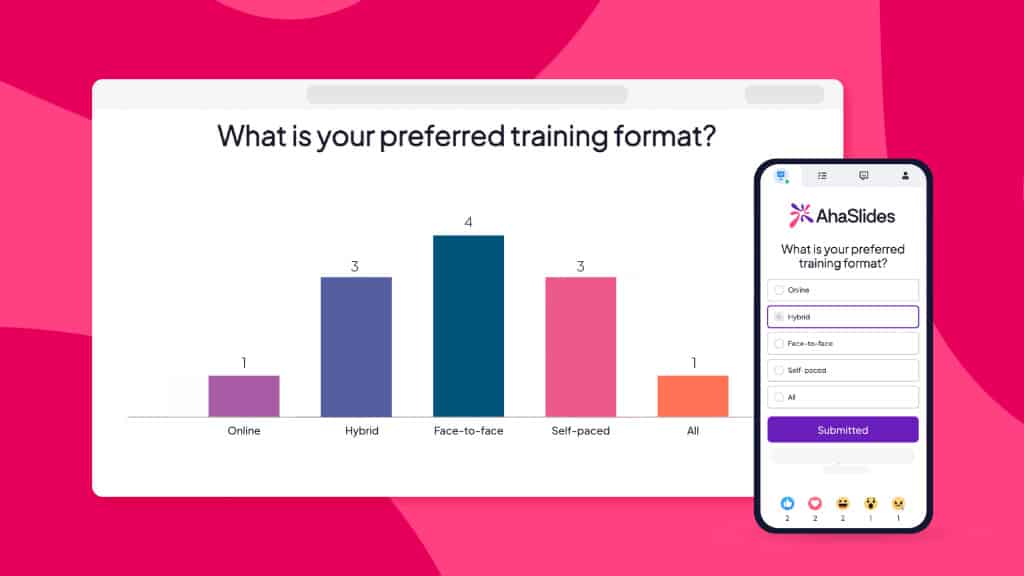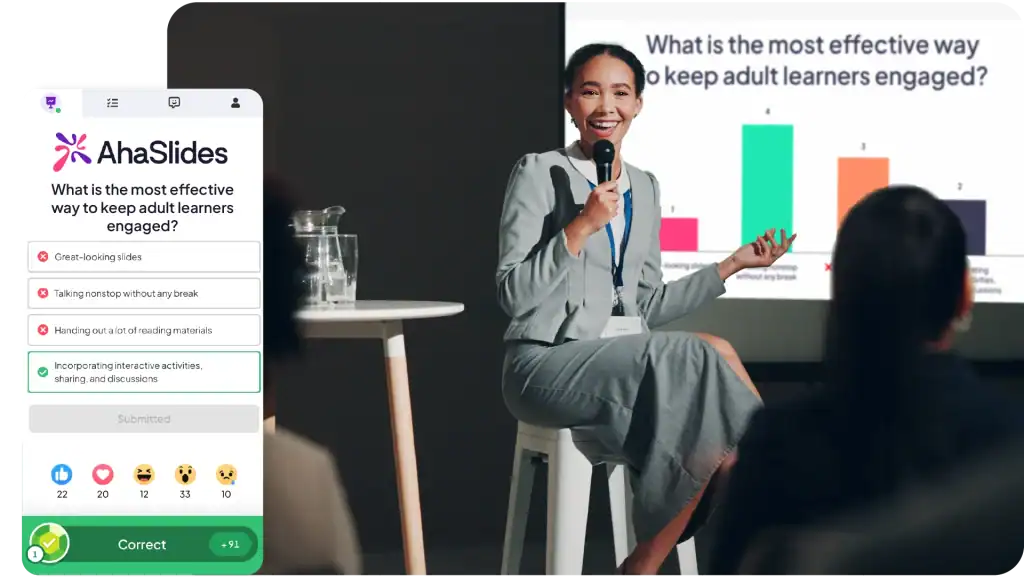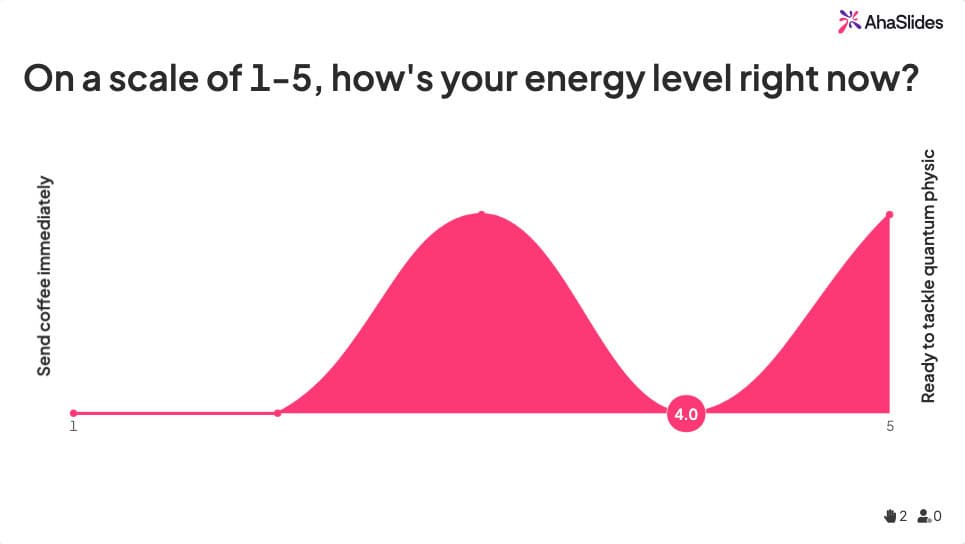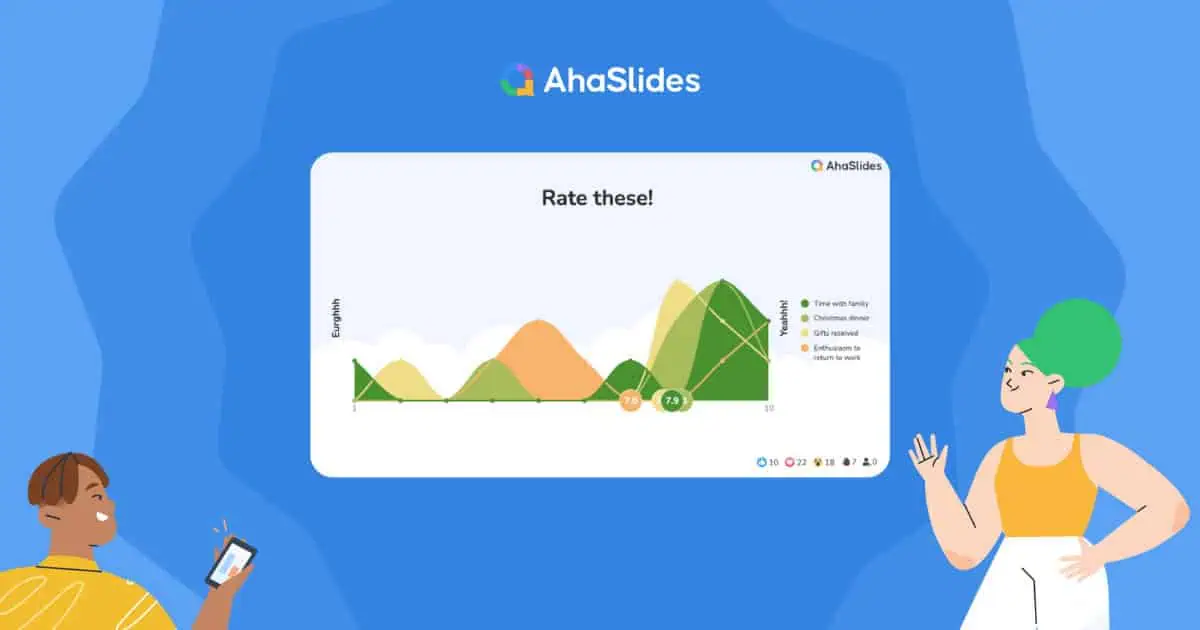Nell'attuale economia dell'attenzione, dominata da TikTok, hai circa 8 secondi per catturare l'interesse di qualcuno: meno tempo di un pesce rosso. Se questo tempo sembra scoraggiante per una presentazione di 5 minuti, ecco la buona notizia: le presentazioni brevi sono la tua arma segreta.
Mentre altri si dilungano su presentazioni da 60 slide, con gli occhi che si riempiono di lacrime, tu trasmetterai un messaggio mirato che rimarrà impresso. Che tu stia presentando un progetto a investitori, formando un team remoto, presentando i risultati di una ricerca o sostenendo un colloquio per il ruolo dei tuoi sogni, padroneggiare il formato da 5 minuti non è solo comodo, ma è decisivo per la tua carriera.
Questa guida si basa sulla scienza delle presentazioni, sulle intuizioni di formatori professionisti che tengono centinaia di sessioni ogni anno e sulle tecniche comprovate dei relatori TED per aiutarti a creare presentazioni coinvolgenti, persuasive e che lascino un impatto duraturo.
Sommario
Perché le presentazioni di 5 minuti richiedono un approccio diverso
Ricerca Uno studio del neuroscienziato John Medina dimostra che l'attenzione del pubblico cala significativamente ogni 10 minuti durante le presentazioni tradizionali. In contesti virtuali, questa finestra si riduce a soli 4 minuti. Una presentazione di 5 minuti rientra perfettamente in questo range ottimale di coinvolgimento, ma solo se progettata correttamente.
La posta in gioco è più alta con le presentazioni brevi. Ogni parola conta. Ogni slide è importante. Non c'è tempo per riempitivi, né spazio per divagazioni, e nessuna tolleranza per gli errori tecnici. Ricerche di settore mostrano che il 67% dei professionisti ora preferisce presentazioni concise e mirate a quelle lunghe, eppure la maggior parte dei relatori continua a considerare i discorsi brevi come versioni condensate di quelli lunghi, il che raramente funziona.
Come fare una presentazione di 5 minuti
Fase 1: Scegli l'argomento con precisione chirurgica

L'errore più grande che commettono i relatori? Cercare di coprire troppi argomenti. La tua presentazione di 5 minuti dovrebbe affrontare un'idea fondamentale—non tre, nemmeno due. Pensalo come un laser, non come un riflettore.
Il tuo argomento deve superare questo test in quattro parti:
- Punto focale singolo: Puoi spiegarlo in una sola frase? In caso contrario, restringi il campo.
- Pertinenza del pubblico: Risolve un problema che stanno affrontando attivamente? Tralascia le informazioni che già conoscono.
- Semplicità: Riesci a spiegarlo senza un contesto complesso? Riserva gli argomenti più complessi per formati più lunghi.
- La tua competenza: Concentratevi su argomenti che conoscete approfonditamente. Il tempo di preparazione è limitato.
Per trovare ispirazione, prendi in considerazione questi argomenti comprovati da 5 minuti in diversi contesti:
- Impostazioni professionali: 3 strategie basate sui dati per ridurre l'abbandono dei clienti, Come gli strumenti di intelligenza artificiale stanno rimodellando il nostro flusso di lavoro, Perché i nostri risultati del terzo trimestre segnalano una svolta strategica
- Formazione e sviluppo: Un'abitudine che trasforma le prestazioni dei team remoti, La psicologia alla base dei punteggi di coinvolgimento dei dipendenti, Come fornire feedback che migliorino effettivamente il comportamento
- Contesti accademici: Risultati chiave della mia ricerca sulla sostenibilità, Come i social media influenzano il processo decisionale degli adolescenti, L'etica dell'editing genetico in tre scenari reali
Fase 2: Progetta diapositive che amplifichino (non distraggano)
Ecco una verità che distingue i presentatori amatoriali da quelli professionisti: la presentazione sei tu, non le tue diapositive. Le diapositive devono supportare la narrazione, non sostituirla.
La domanda sul conteggio delle diapositive
Le ricerche condotte da esperti di presentazioni suggeriscono 5-7 slide per un intervento di 5 minuti, ovvero circa una slide al minuto, con il tempo necessario per l'apertura e la chiusura. Tuttavia, i relatori TED a volte utilizzano 20 slide che avanzano rapidamente (10-15 secondi ciascuna) per mantenere l'impatto visivo. Ciò che conta più della quantità è la chiarezza e lo scopo.
Principi di progettazione dei contenuti
- Testo minimo: Massimo 6 parole per diapositiva. Il tuo copione di 700 parole deve essere letto, non mostrato.
- Gerarchia visiva: Utilizza dimensioni, colori e spazi bianchi per indirizzare l'attenzione su ciò che conta di più.
- Visualizzazione dei dati: Una statistica o un grafico convincente per diapositiva è meglio di paragrafi di spiegazione.
- Design coerente: Gli stessi caratteri, colori e layout mantengono la professionalità.
Punta Pro: Rendi interattiva la tua presentazione utilizzando sondaggi in tempo reale, funzionalità di domande e risposte o quiz rapidi. Questo trasforma gli spettatori passivi in partecipanti attivi e migliora notevolmente la memorizzazione delle informazioni. Strumenti come AhaSlides consentono di incorporare queste funzionalità senza problemi, anche in formati da 5 minuti.

Fase 3: padroneggiare il tempismo con precisione militare
In una presentazione di 5 minuti, ogni secondo ha un suo scopo. Non c'è margine per divagare o recuperare dagli errori. Gli oratori professionisti seguono questa struttura collaudata:
La formula comprovata per l'allocazione del tempo
- 0:00-0:30 – Gancio di apertura: Cattura l'attenzione con un fatto sorprendente, una domanda provocatoria o una storia avvincente. Evita lunghe introduzioni.
- 0:30-1:30 – Il problema: Stabilisci perché il tuo pubblico dovrebbe essere interessato. Quale sfida affronta il tuo argomento?
- 1:30-4:30 – La tua soluzione/intuizione: Questo è il tuo contenuto principale. Fornisci 2-3 punti chiave con prove a supporto. Elimina tutto ciò che non è essenziale.
- 4:30-5:00 – Conclusione e invito all’azione: Rafforza il tuo messaggio principale e spiega al pubblico esattamente cosa fare dopo.
Regolazione della presentazione virtuale
Presenti da remoto? Inserisci momenti di coinvolgimento ogni 4 minuti (secondo la ricerca di Medina). Utilizza sondaggi, chiedi risposte in chat o poni domande retoriche. Controlla l'angolazione della telecamera (altezza degli occhi), assicurati che la luce frontale sia forte e testa la qualità audio in anticipo. Il pubblico virtuale è più soggetto a distrazioni, quindi l'interazione non è facoltativa: è essenziale.

Fase 4: Presentarsi con autentica sicurezza

Anche i contenuti più brillanti falliscono se presentati male. Ecco come i professionisti affrontano il momento della verità:
Esercitati come se la tua carriera dipendesse da questo (perché potrebbe essere così)
Prova la tua presentazione di 5 minuti almeno 5-7 volte. Usa un timer. Registrati e riguardati: è faticoso ma prezioso. Esercitati finché non riesci a presentare i tuoi contenuti in modo naturale, senza dover leggere le slide. La memoria muscolare ti aiuta a superare il nervosismo.
Tecniche di consegna che distinguono i dilettanti dai professionisti
- Varietà vocale: Varia ritmo, tono e volume. Fai delle pause strategiche per dare enfasi: il silenzio è potente.
- Linguaggio del corpo: Di persona, usa gesti aperti e muoviti con decisione. Davanti alla telecamera, limita i gesti (amplificano) e mantieni il contatto visivo con l'obiettivo.
- Narrativa: Inserisci un esempio o un aneddoto breve e pertinente. Le storie aumentano la memorizzazione di 22 volte rispetto ai soli fatti.
- Gestione dell'energia: Adatta la tua energia al tuo messaggio. Entusiasta per l'ispirazione, misurato per argomenti seri.
- Prontezza tecnica: Testare l'attrezzatura 30 minuti prima. Avere piani di riserva per problemi di connettività.
Il segreto della connessione con il pubblico
Considera la tua presentazione come una conversazione, non come una performance. Mantieni il contatto visivo (o guarda la telecamera per le presentazioni virtuali). Riconosci le reazioni. Se inciampi, fai una breve pausa e continua: il pubblico tollera l'autenticità, ma non la lettura automatica delle slide.
Suggerimento segreto: Non sai se la tua presentazione di 5 minuti ha un impatto? Usa un strumento di feedback per raccogliere subito il sentimento del pubblico. Lo sforzo richiesto è minimo ed eviterai di perdere preziosi feedback lungo il percorso.

5 errori comuni quando si fa una presentazione di 5 minuti
Superiamo e ci adattiamo attraverso prove ed errori, ma è più facile evitare errori da principiante se sai quali sono👇
- Correndo nel tempo: Il pubblico se ne accorge. È un segnale di scarsa preparazione e di mancanza di rispetto per il programma. L'allenamento deve terminare alle 4:45.
- Sovraccarico delle diapositive: Le slide ricche di testo inducono il pubblico a leggere invece che ad ascoltare. Perdi subito la loro attenzione.
- Esercizio di salto: "Sono solo 5 minuti" è un ragionamento pericoloso. I formati brevi richiedono PIÙ pratica, non meno.
- Cercando di coprire tutto: La profondità batte l'ampiezza. Un'intuizione chiara e tangibile è meglio di cinque punti che nessuno ricorda.
- Ignorare il pubblico: Adatta i contenuti ai loro interessi, al loro livello di conoscenza e alle loro esigenze. Le presentazioni generiche non hanno mai successo.
Esempi di presentazione in 5 minuti
Studia questi esempi per vedere i principi in azione:
William Kamkwamba: "Come ho sfruttato il vento"
Questo TED Talk video presenta la storia di William Kamkwamba, un inventore del Malawi che, da bambino in condizioni di povertà, costruì un mulino a vento per pompare acqua e generare elettricità per il suo villaggio. La narrazione naturale e diretta di Kamkwamba è stata in grado di affascinare il pubblico e anche il suo uso di brevi pause per far ridere le persone è un'altra grande tecnica.
Susan V. Fisk: "L'importanza di essere concisi"
Questo video di allenamento offre suggerimenti utili agli scienziati per strutturare il loro discorso in modo che si adatti al formato di presentazione "5 Minute Rapid", anch'esso spiegato in 5 minuti. Se hai intenzione di creare una presentazione rapida "How-to", guarda questo esempio.
Jonathan Bell: "Come creare un grande marchio"
Come suggerisce il titolo, l'oratore Jonathan Bell vi darà una passo-passo guida su come creare un marchio duraturo. Va dritto al punto con il suo argomento e poi lo scompone in componenti più piccole. Un buon esempio da cui imparare.
Fattura PACE: '5 Min Pitch at Startupbootcamp'
Questo video mostra come Fattura PACE, una start-up specializzata nell'elaborazione dei pagamenti multivaluta, è riuscita a presentare le sue idee agli investitori in modo chiaro e conciso.
Will Stephen: "Come suonare in modo intelligente nel tuo discorso TEDx"
Utilizzando un approccio umoristico e creativo, TEDx Talk di Will Stephen guida le persone attraverso le abilità generali del parlare in pubblico. Un must per trasformare la tua presentazione in un capolavoro.
Pronti a creare presentazioni davvero coinvolgenti? Inizia con gli strumenti di presentazione interattivi di AhaSlides e trasforma la tua prossima presentazione di 5 minuti da dimenticabile a indimenticabile.








